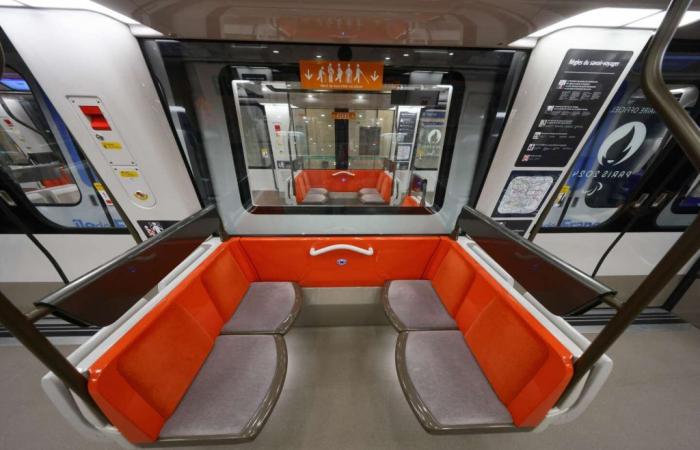It is true that Alexa Faucher does not have a job quite like the others. The director of the office of the mayor of Chevilly-Larue, a town in Val-de-Marne close to Paris-Orly airport, leaves at dawn, returns late and continues public meetings, municipal councils and unforeseen events. Before Monday June 24 and the extension of line 14 to Orly, his RER and bus journey between Paris and Chevilly took him two hours a day, minimum. Since then, it has been divided by three. What is she going to do with all this time? ” Sleep ! “, she confided on the day of the station’s inauguration.
Also read the decryption | Article reserved for our subscribers Line 14 and its extension allow the Grand Paris Express to become a reality
Add to your selections
Same question asked of Colette and Bernard Biout, a retired couple. Forty years of bus travel to Clamart (Hauts-de-Seine) for him: “One hour in the morning, one hour in the evening; thirty minutes today.” Memories of calls from parents who missed the bus for her, a former nursery director. At the other end of the line, Carrefour-Pleyel, a mother of three children is enjoying the time saved since the arrival of the 14 in Saint-Ouen (Seine-Saint-Denis). She works at Gare-de-Lyon. Before, it was an hour by line 13, “and much more in feeling”. Adding a station brings it even closer to home.
Nothing is banal in these testimonies. The arrival of the metro in areas previously difficult to access is a revolution for those who live or work there. Their stories, like those collected along the extension of line 11, recall those of commuters at the end of the 1960s, when the RER A stopped at their doorstep. The office or factory was only a reasonable time away. The journey was made in silent and comfortable trains. Nothing to do with the daily life of the couple Marlène and Bernard who, in She runs, she runs the suburbs – the 1972 screen adaptation of Brigitte Gros’ novel Four hours of transport per day (Denoël, 1970) – spends his life stuck in crowded buses and traffic jams.
“The absence of transport was a real obstacle”
The number of Ile-de-France residents whose daily lives will suddenly change in the next ten years continues to grow as the 68 Grand Paris Express (GPE) stations and its 200 kilometers of lines are put into service. Territories are transforming. Some radically. For the seven only new stops of the 14, where 125,000 people live, some 25,000 additional inhabitants are expected between 2025 and 2030, an increase of 30%. Who are they, where do they come from? Are they raising prices? How many high-end residences instead of pavilions, how many housing for the most modest?
You have 73.4% of this article left to read. The rest is reserved for subscribers.






